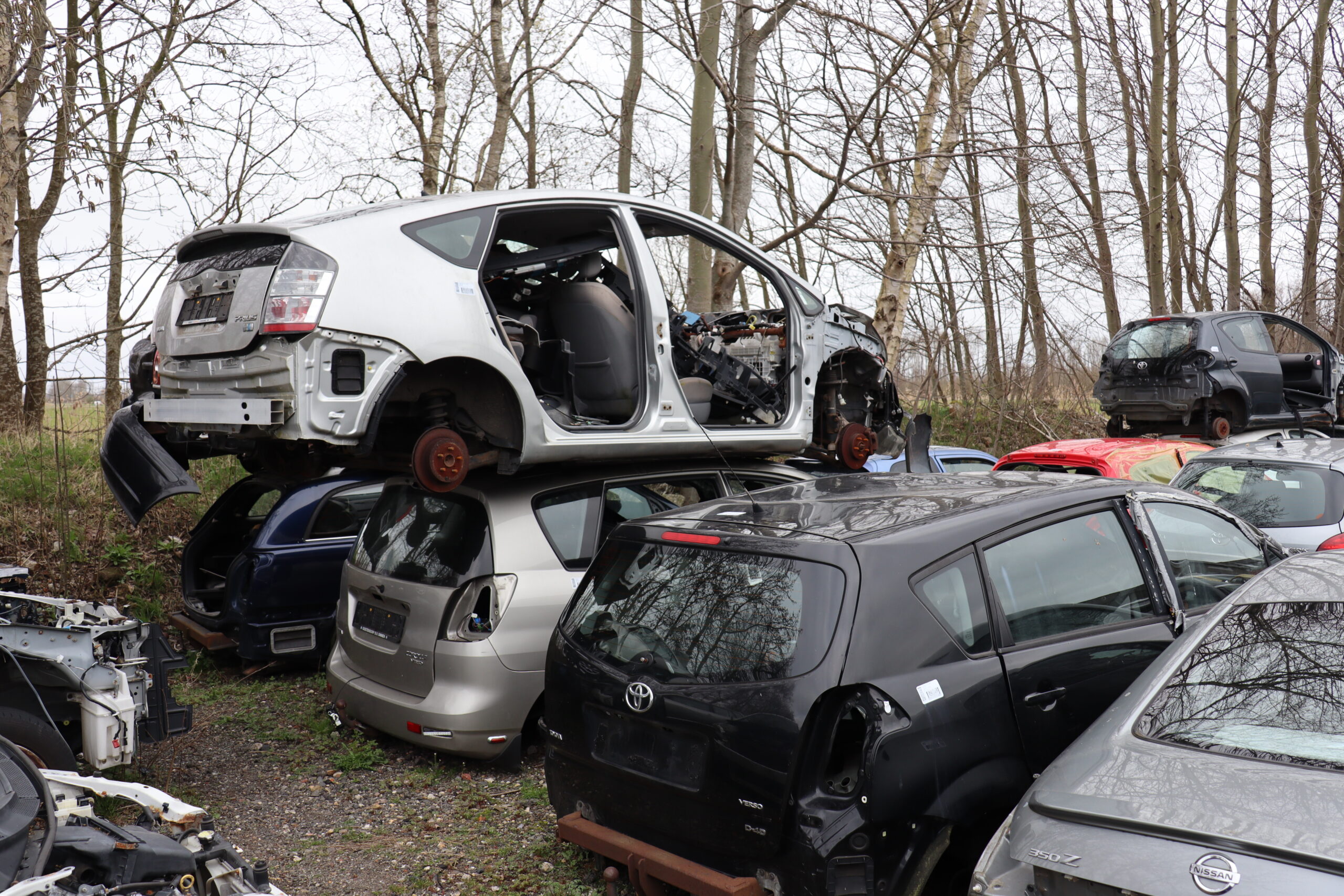At Frans van den Mosselaar Autorecycling en Autodemontage in Dongen, the employees are hard at work at what appears to be a car production line. But, on closer inspection, they’re not adding a part at every point in the line, but removing one. This dismantling line is part of what Van den Mosselaar believes is the necessary innovation of the dismantlement and processing chain for cars in the Netherlands. “There needs to be a network of regional processing plants that work efficiently, effectively and on a large scale.”
Tekst Peter van Kessel
In the 80 metre-long facility in Dongen, the Van den Mosselaar dismantlers work on around seven cars at the same time, as the vehicles progress step by step along the line. The fluids are removed first, followed by the tyres. At every subsequent station, a different part of the car is removed for recycling: glasswork, bumpers, PUR foam… It is no coincidence that the car dismantling line is set up in the exact opposite order as a production line. Further down the line, a tilting machine flips a car upside down in no time, so that the engine, gearbox and rear axle, among other parts, can be removed. Thanks in part to cranes that simplify lifting, the work can be carried out quickly and without much physical effort. The employees rarely work with their hands above their heads. When the wiring is removed from the vehicle at the final station, the body is sent into the press.
Solid line
While sons John and Michel, who are in charge of running the company, give instructions occasionally, their father, Frans van den Mosselaar – the founder of the now fifty-year-old family company – explains that the prototype of the self-developed line was developed back in 1995. “Since then, we’ve developed and tweaked it further. Over the span of twenty years, we’ve only recently replaced the wiring. Other than that, this solid line still functions without a hitch. Most importantly, it lets us dismantle and separate vehicles quickly and effectively for reuse. High-quality plastics, aluminium and wiring are separated for resale. The shredder is pleased with our approach because we remove the glass from the car, reducing the risk of damage.”
Great example of innovation
The dismantling line – an investment of a million euros with a payback period of around five to seven years – is a great example of innovation in car dismantling at a family business that has always been at the forefront. Frans van den Mosselaar was one of the founders of STIBA and everyone in the car recycling sector in the Netherlands is familiar with his clear vision and opinion. After all, Van den Mosselaar is not afraid to speak his mind. “Car recycling is evolving. When the old guys like myself began working, it was every man for himself. But a new generation is taking over that is more willing to collaborate and in which – like ARN – works based on common interest. And that’s something that we definitely need in order to raise recycling to the next level, especially in terms of efficiency and quality.”
Siginificant leap forward
Van den Mosselaar is referring first and foremost to car dismantling, the part of the recycling chain that he believes could be more efficient. “Most of the companies are actually too small. Some of them are facing significant challenges, while others have already thrown in the towel.” The reason? “For many companies, it is simply too difficult to create large enough flows of metals and plastics to make them worthwhile for processors. So, what happens? The relatively small flows of high-quality materials end up as waste. There is only one solution: to scale up.”
Chain of regional centres
This entrepreneur from Dongen proposes an approach to collaboration that would mean a significant leap forward for some companies. In his opinion, a chain of around fifteen regional centres in the Netherlands should be created in order to handle the necessary volumes. “Modern, efficient plants in which the participating dismantling companies have an interest and where part of their work is carried out. And with benefits for all participants from the work they are unable to handle on their own due to volume limits.”
His son John also sees numerous advantages to this approach. “Regional plants, for instance, could also take care of the complex processing of propulsion batteries for smaller businesses. This can be carried out better and safer with a centralised approach.”
Purer flows
The Van den Mosselaar family is convinced that innovation in the chain can also have a positive effect on the various links in that chain. “It is a good thing that processors and shredders can process ‘purer’ flows – and that there is still a future for smaller dismantling companies, provided they keep up with the times. The quality of dismantlement and the recycling process can be improved. In the long term, we need to generate less waste and more new raw materials. The role that ARN Tiel can play in this still needs to be explored.”
How can such an innovative chain be created? “ARN will have to consider this closely and then bring together dismantling companies, processors and other parties in the chain to discuss a solution. We believe this is the only way to make car recycling more efficient, better and affordable in the long term.”





